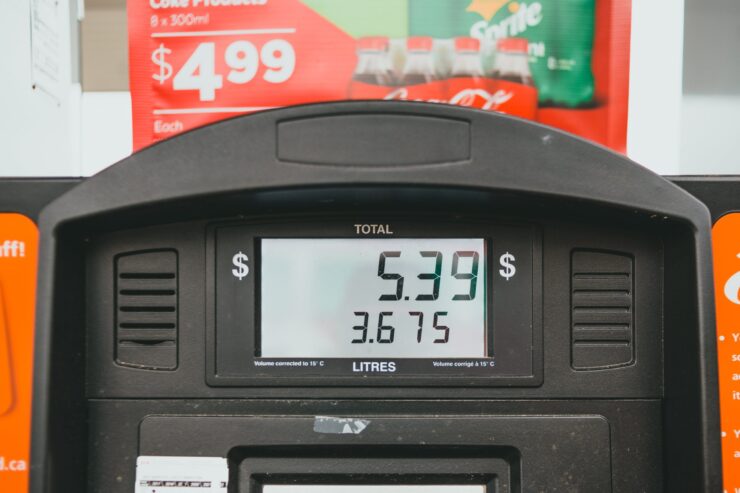As a Florida resident, you’ve probably noticed gas prices creeping up lately.
I totally get how frustrating it is to see those numbers at the pump get higher and higher.
Let’s break down some of the key reasons why gas is getting more expensive in our state:
Supply and Demand
The basic laws of economics apply to gas prices like anything else.
When demand goes up relative to supply, prices tend to rise. Here’s what’s happening on that front:
- Global demand rebounded – As pandemic restrictions eased, people started driving more. Global crude oil demand picked back up, pushing prices up.
- Less oil production – At the same time, OPEC has been slow to ramp up oil production after cuts made early in the pandemic. Lower supply relative to demand puts upward pressure on prices.
- Refinery issues – Some refineries in the U.S. have had temporary closures for maintenance and repairs, constraining gasoline supply.
The Russia-Ukraine War
Russia’s invasion of Ukraine has roiled global energy markets in many ways:
- Sanctions reduced Russian oil exports – Sanctions essentially locked much of Russia’s oil out of the global market, cutting worldwide supply.
- Greater uncertainty – The war has fueled uncertainty in markets, which tends to drive prices up further. Traders get nervous about potential supply disruptions.
- High crude oil prices – Russia is the world’s 3rd largest oil producer, so limiting its exports caused crude prices to spike. Higher crude costs get passed to consumers.
The Approach of Summer
The summer driving season also plays a role in pushing prices higher:
- Seasonal demand uptick – More people hit the road for vacations in summer, increasing gasoline demand.
- Transition to summer fuel blends – The switch to more expensive summer fuel blends that help prevent smog adds to costs as well.
- Hurricane concerns – As the official start of hurricane season approaches, there are worries storms could disrupt oil drilling and refining along the Gulf Coast.
What This Means for Your Wallet
Unfortunately, it looks like relief at the gas pump may still be a ways off.
read also: 37 Gas Station Signs and What They Mean
Based on current forecasts, experts say drivers in Florida should expect to keep paying well over $4 per gallon through the summer.
The takeaway? Buckle up for pricier fill-ups in the coming months.
Try to moderate your gas consumption where possible by consolidating trips, driving less aggressively, and avoiding using premium grades unless your vehicle really requires it.
And you may want to put off any big summer road trips to save some cash.
Sticker shock at the pump is no fun. But hopefully understanding the key factors behind the price increases provides some context on why you’re paying more lately.
Let me know if you have any other gas price questions!
Why Are Refineries Closing?
The temporary closures of some refineries in 2022 are also contributing to high gas prices.
Here are a few reasons refineries may be shutting down:
- Scheduled maintenance – Refineries periodically need maintenance and upgrades, requiring temporary shutdowns. These are often scheduled in spring or fall when demand is lower.
- Accidents and unplanned repairs – Fires, power outages, equipment malfunctions, and other issues can force unscheduled closures for repairs.
- Pandemic-related slowdowns – Some refineries cut production early in the pandemic when demand plunged. Ramping back up has been slower than expected.
- Low refining margins – Sluggish demand and high crude oil costs have squeezed profit margins for refiners. Some have reduced operating rates.
- Switching to renewable fuels – A few refineries, especially in California, are transitioning to focus more on renewable diesel production.
- Permanent closures – Older, less profitable refineries are shutting down entirely. Five refineries representing about 1 million barrels per day of capacity have closed since 2020.
When refineries slow down or halt operations, it restricts gasoline supply, which drives up prices at the pump.
So the next time you see news about a refinery outage, know that it’s likely contributing to the rising gas prices that have Americans feeling the pinch.
How Do Gas Prices Influence Inflation?
Rising gas prices don’t just hurt your wallet – they also have a meaningful impact on the overall inflation rate. Here’s the connection:
- Gas prices influence transportation costs – Fuel is a major expense for trucking companies, airlines, railroads, and shipping firms. Higher gas prices get passed on through higher transportation and shipping costs.
- Higher transportation costs raise prices economy-wide – As transportation gets more expensive, companies across industries pay more to ship materials, products, and supplies. Those higher costs ultimately get passed on to consumers.
- Consumers have less money for other spending – When people pay more at the pump, they have less money to spend on other goods and services. Lower consumer spending can dampen economic demand.
- Core inflation measures often exclude gas prices – Volatile gas prices are commonly excluded from “core” inflation metrics. But rising fuel costs still indirectly impact the prices of many consumer goods.
- Psychological impacts on inflation expectations – Seeing those big numbers on gas station signs reinforces consumer concerns about inflation. Those worries can become somewhat self-fulfilling.
So while gas price increases may not immediately show up in official inflation statistics, they absolutely influence overall inflation.
There’s a clear ripple effect from pain at the pump to pressures across the broader economy.
It’s one key reason the Federal Reserve is focused on taming inflation.
Will Gas Prices Keep Going Up?
It’s the question on every driver’s mind: will gas prices just keep getting higher?
Though prices may fluctuate day to day, here are some key factors that provide clues on where gas prices are headed overall:
Factors suggesting prices could rise further:
- Global crude oil supply remains tight
- EU sanctions on Russian oil are still ramping up
- Refinery capacity is still constrained
- Summer driving season increases demand
- Switch to summer fuel blends
- Potential Gulf Coast hurricane disruptions
- Low fuel inventories and reserves
Factors that could ease prices:
- Additional oil released from strategic reserves
- Increased US oil/gas production
- Lower oil demand from a potential economic slowdown
- Negotiations with Venezuela to allow imports
- Shift from gasoline to electric vehicles
- Reduced consumer fuel consumption
Many analysts think gas prices will remain elevated over $5 per gallon through 2025, but could start trending down in 2025 if supply improves and demand slows.
However, the situation is volatile. A major hurricane or additional supply disruptions could send prices spiking further.
For now, try to reduce fuel costs where possible by driving less, combining trips, and using apps to find the cheapest gas.
And consider options like public transit, carpooling, biking, or walking when practical. Hang in there – relief may still come, even if it takes a while!
Conclusion
In summary, several complex forces are driving gas prices upwards in Florida and across the nation:
- Rebounding demand as pandemic restrictions ended
- Tight global oil supplies magnified by the Russia-Ukraine war
- Refinery closures constraining production
- The seasonal switch to summer fuel blends
- Uncertainty heading into hurricane season
While prices may ease somewhat in the future if supplies improve, experts expect elevated gas prices over $5 per gallon to persist through 2024. This inflationary pain at the pump ripples through the economy, impacting consumer spending power. Though challenging, identifying ways to reduce personal fuel consumption can help offset the impacts to your budget. Stay resilient out there!

